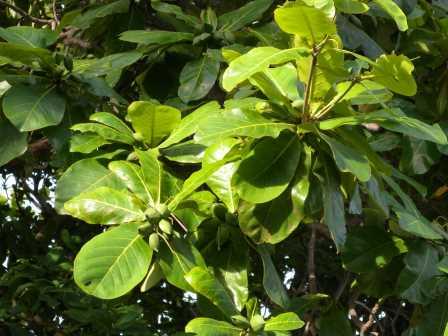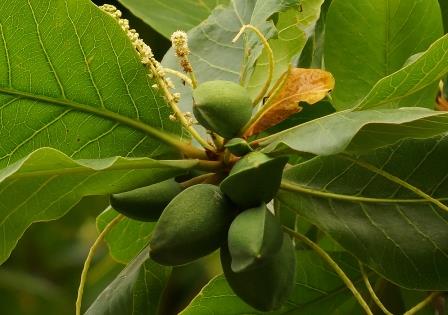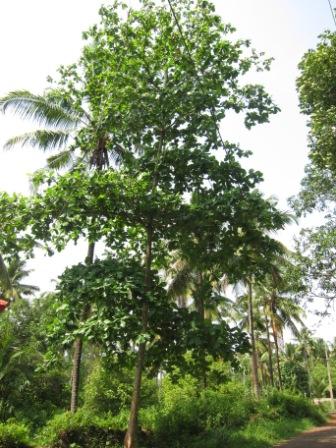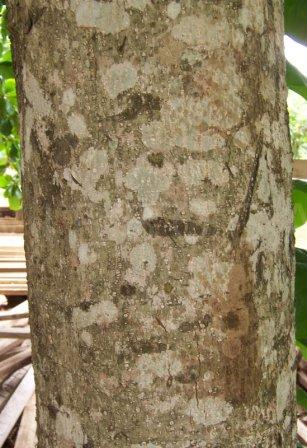Natural Regeneration :
- Regenerates naturally by seeds under favorable conditions.
Artificial Regeneration :
- Propagated by Nursery raised seedlings.
Seed collection and Storage :
- The fruits are collected from tree during June-July.
- Dry fruit rate 176/kg
- The germinative capacities of the seed varies from 20 - 25% and
- Plant percent from 40 - 45%.
- Cold water soaking for 24 hours.
Seed Treatment :
- Cold water soaking for 24 hours.
Nursery Technique :
- Seeds are sown in mother bed during March – April.
- Germination stats in a week and complete in a month.
- Beds are regularly watered and weeded.
- 3-4 months old nursery raised seedlings are fit for planting.
Plantation technique :
- 3-4 month old seedlings are planted out on the onset of monsoon.
- Pit size 30 cm3 with spacing of 3 m x 3 m
Care & Disease Control :
- Weeding and soil working is necessary for first 2-3 years in plantation.
Recommended Harvest :
Yield :
- Approximately 22 – 36 tons / ha.
Major uses :
- The timber is durable under cover and used as good constructional timber.
- Timber is very suitable for rafters, scantlings, posts and beams.
- It is also used for house building, boat building, carpentry works.
- The leaves are fed for Tusar silk worms.
Other uses :
The trunk is a source of gum.The oil from the seed is used for making soap, but its industrial use is limited by the difficulty in extracting the kernel. Bark, leaves, roots and fruit are all important sources of tannin with the astringent bark containing 9 - 23% tannin.
Market details :
- Approximately Rs.2300 to Rs.2600/ton.





